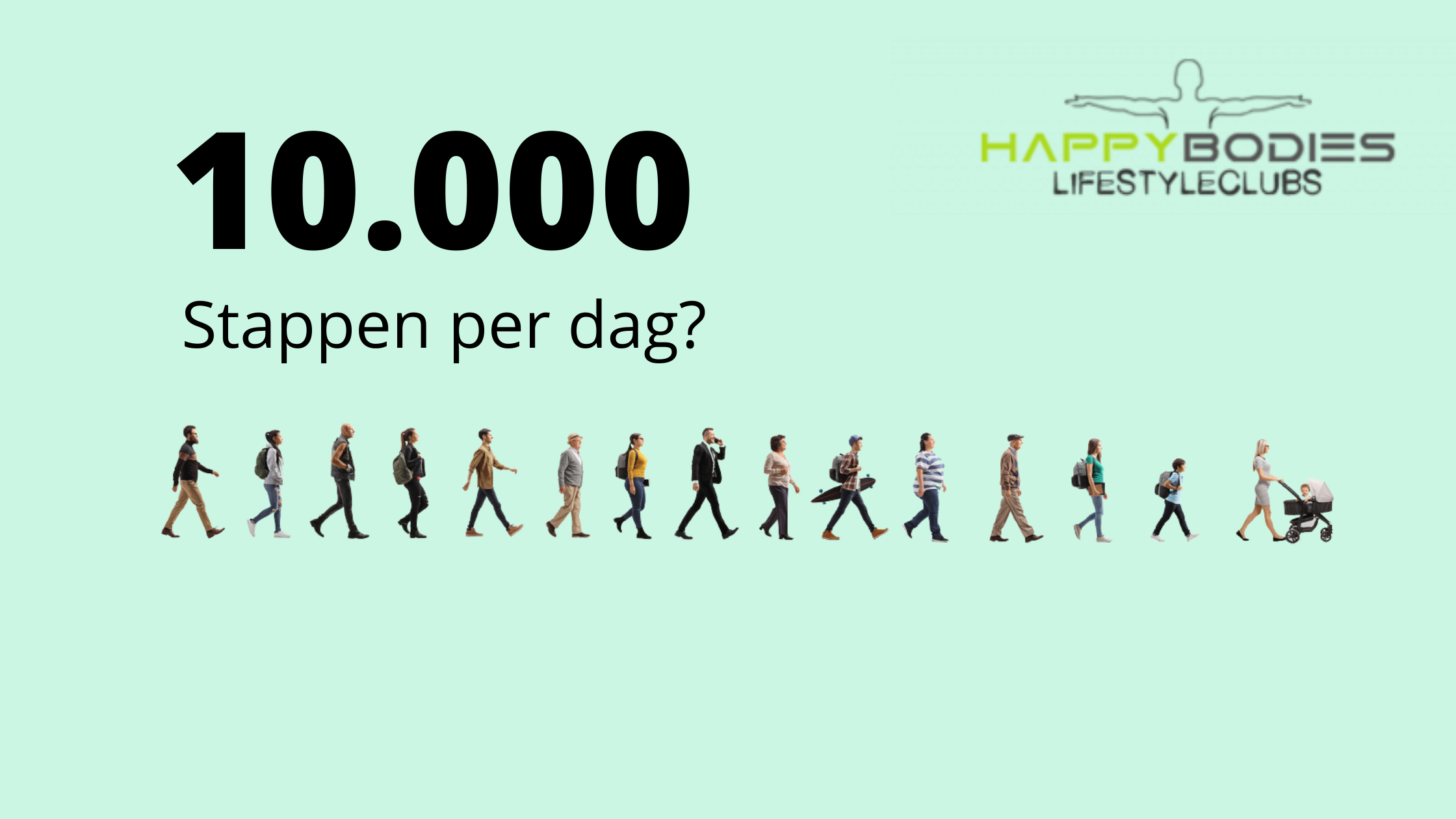10,000 steps a day, a necessary evil or nonsense?
You've probably heard of the rule that you eat at least every day 10,000 steps should put? This statement is not directly reflected in the advice that the government gives us. They use a completely different one exercise standard. In this article we explain exactly how it is with those 10,000 steps per day.
What is the exercise standard for 2021?
The exercise standard means a minimum amount of effort per week that is required to exercise healthily. The exercise standard has been the same in the Netherlands for a number of years:
- Adults: 5 days a week at least 30 minutes moderately intensive exercise
- Children: at least one hour of moderate-intensity exercise every day.
- At least twice a week some form of weight training
These 30 minutes do not have to be in 1 piece, but can also be done in three times 10 minutes or, for example, twice 15 minutes
Moderately intensive exercise
Moderately intensive exercise of course sounds a bit vague. It would be easier if it were clearly defined what this means.
The bottom line is that you have at least one elevated heartbeat should reach. You still have to be able to handle it though to talk. If that is not possible, then it is more than moderately intensive. Of course it is not wrong to do more than moderately intensive exercise.
The exercise standard is one minimum, no maximum.
Some examples of activities which fall under moderately intensive exercise:
- To walk
- Misuse
- Heavier household tasks such as vacuuming, cleaning.
- Swimming
Origin 10,000 steps
Japanese physician Dr. Yoshiro Hatano, is the creator of the 10,000 step rule. Dr. Hatano investigated the correlation between exercise and health.
He translated the minimum movement he considered necessary for a healthy life into the number of steps you have to take. According to this Japanese doctor, we put people on average per day 6000 steps.
These are the steps we take in our normal lives. Think of all movements that you put in a day, for example:
- From your bed to the bathroom
- Walk through your house
- Get the mail
- Shopping.
one every day half o'clock extra exercise, according to Dr. Hatano, would be just enough to meet his exercise standard. Walking for half an hour is about 4000 steps.
6000+4000 = 10.000
Now the problem is that we in the Netherlands do not take 6000 steps a day, but rather 2000 to 3000. So if those 10,000 steps are the "holy grail", then we really have to walk a lot more.
Fortunately, you don't have to.
Why is walking healthy?
The moment you start moving or walking, you put your body to work:
- Your heart rate goes up
- your breathing goes up
- your body carries oxygen and sugar to your muscles
- your circulation also goes up.
- It stabilizes you blood sugar
And the latter is very good.
If you move or sport, your body moves up to 25 liters of blood per minute through your body. Normally that is only 5 liters of blood per minute.
prof. Physiologist Mary Hopman: “Because the blood is pumped so hard through your blood vessels, these blood vessels are stimulated and they give all kinds of things favorable dust off. That helps against arteriosclerosis and helps keep your organs such as your heart, brain and kidneys young.”
Our body is also made to move. We were in prehistoric times hunter-gatherers. Our genes date back to that time. However, we don't have to move that much anymore, we get our food in the supermarket and we mainly do our work while sitting.
Mary Hopman, which studies the relationship between activity, inactivity and the development of chronic diseases:
“We can now 30 chronic diseases to our lack of activity, or lack of movement”.
Do we really have to take 10,000 steps?
The short answer is “No”. But it's not bad to walk so much.
When you look at this rule from the point of view of being healthy longer (read: dying later), research by I-Min Lee, professor of epidemiology at the Harvard TH Chan School of Public Health, shows that the magical border lies with 7.500 steps. People who take more than 7,500 steps would not live longer, according to this study.
You can also argue that you do not need to take extra steps to exercise moderately intensively. After all, one step leads to another step not.
Bee Happy Bodies you always only train for 35 minutes, strength and cardio combined, so you have a continuous increased heart rate. In this way you take two elements from the exercise standard in one fell swoop:
- 35 minutes of (moderate) intensive training
- Weight training
If you come to exercise 2 times a week, you have already trained for 70 minutes (out of 150) and you have 100% met the strength training standard.
Happy Bodies
Wondering if Happy Bodies can do something for you?
Do the membership test and schedule a no-obligation conversation with one of our lifestyle coaches
Sign up for our newsletter and receive a notification as soon as we put a new blog post online. In addition, you will receive free useful tips & tricks to achieve your health goals.


